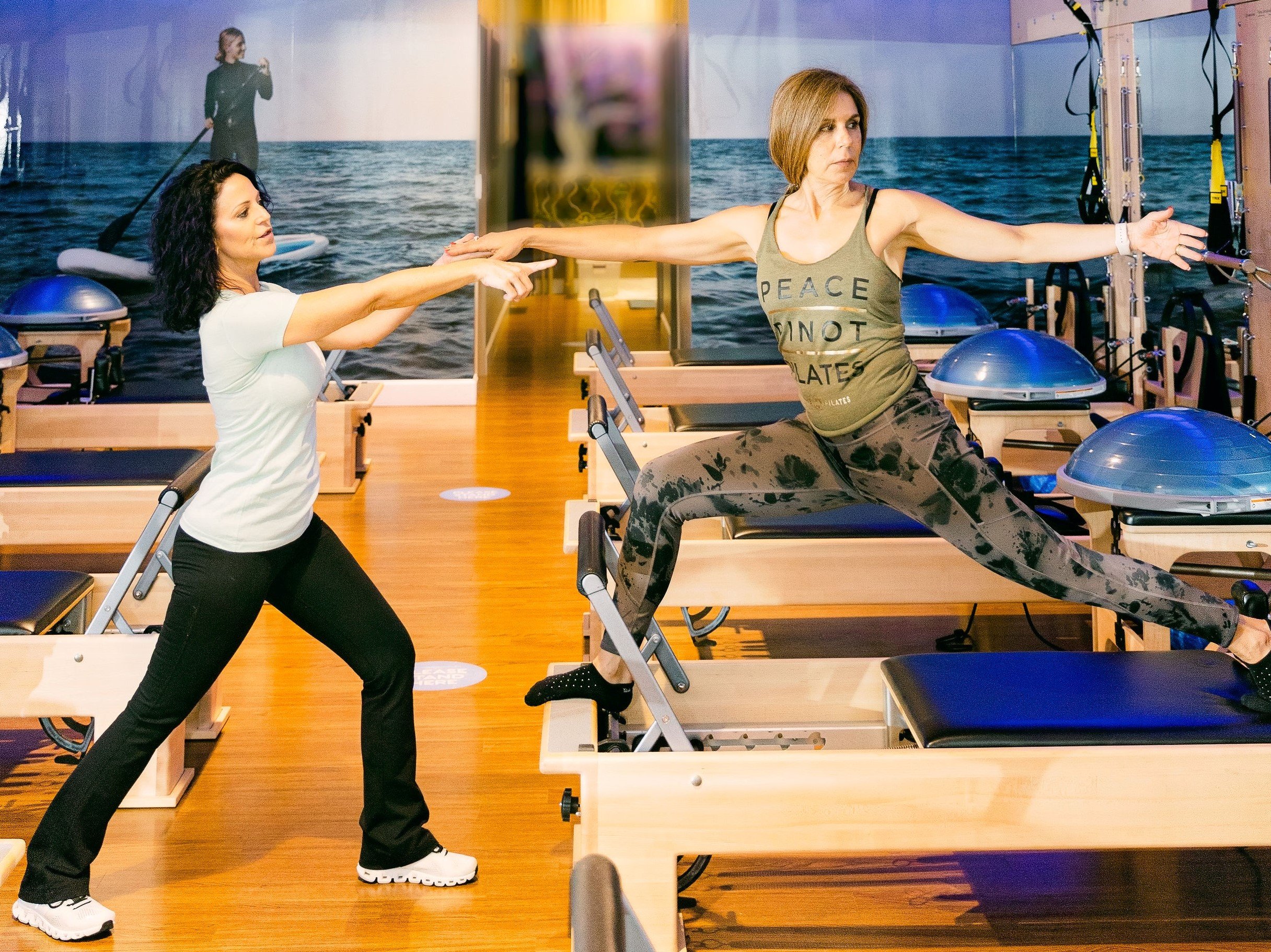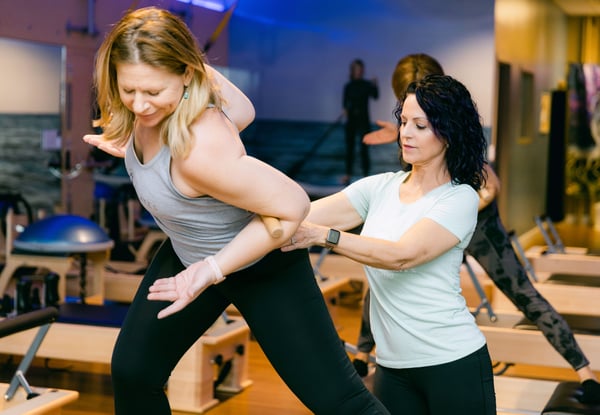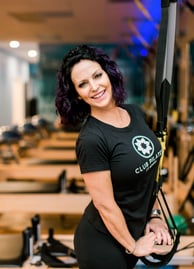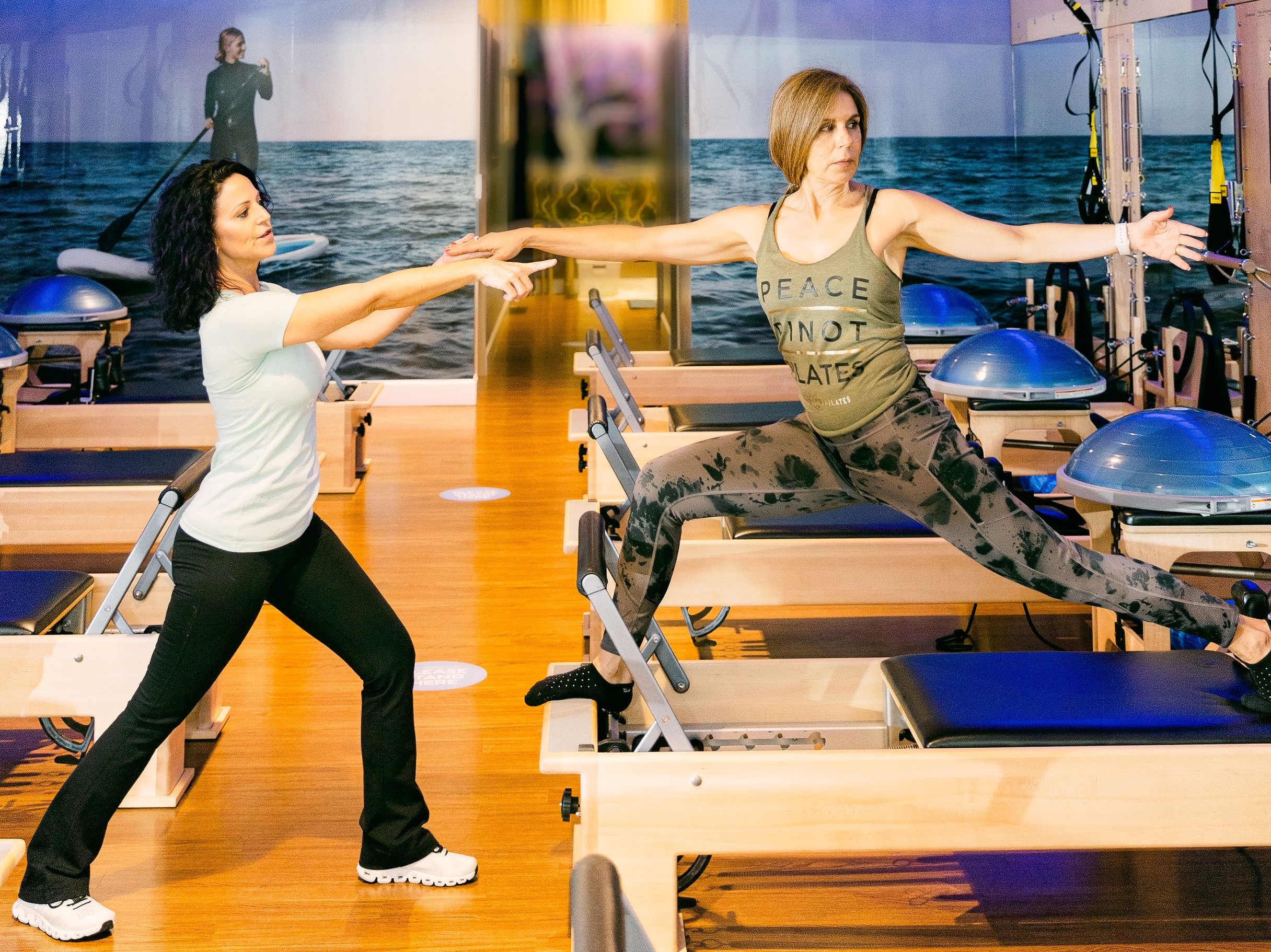Pickleball was the buzzword of 2020, and for good reason.
Pickleball, a sport that combines elements of tennis, badminton, and ping pong, became the fastest growing sport in the United States as of 2020. Fun, social, and friendly, pickleball is easy for beginners to learn yet competitive, making it the perfect way for people of all backgrounds, ages, shapes, and sizes to stay active. Its popularity is also no doubt in part due to the current state of the world, where people are spending more time outdoors than ever. Uniquely, the breakdown of its high participation rates by age showed that participants tend to be older, with 75% of participants being age 55 or older. For these reasons, I have found many parallels between pickleball and Pilates as universal healthy activities.

The Pilates-Backed Secrets to Achieving your Pickleball Goals…
As a golf and racquet specialist since 2002, it has been my observation that most amateur racquet athletes reach the pinnacle of their ability in the game due to a lack of conditioning. Sure, you must practice the sport, but without a comprehensive conditioning program, the athletes usually acquire overuse syndrome due to the one-sided nature of the sport. Through my years as a Pilates instructor, I have worked with thousands of rotational sport athletes to help them achieve their sports and health goals while preventing injury. These athletes, whether aspiring or professional, have lots in common, not only with one another, but with pilates students!
Pilates works by developing body-sense, balance, joint mobility, strength, core-strength, and stability all with an emphasis on the alignment and precision. In racket sports like Pickleball, a player typically uses the same hand and arm to hit the ball, which creates muscle imbalances. Pilates is focused on alignment and balanced musculature. Strengthening the deep abdominal and back muscles while focusing on alignment and muscular balance helps the Pickler hit that winning shot again and again with accuracy without injury.
Alignment is everything! Without good postural alignment, rotation is impossible, and injury is imminent. Overuse injuries can be prevented with Club Pilates Reformer-based Pilates.
 Foot Injuries
Foot Injuries
Injury: Because of the quick pivoting movement required for Pickleball, foot and ankle injuries are quite common.
Pilates Solution: A foot release with a Trigger Point ball and Footwork on the Reformer are simple ways to create ankle stability and mobility, and prepare the feet and ankles to handle the stress of quick pivoting movements. “Running” on the Reformer is an effective way to lengthen and strengthen the calf muscles which is crucial for the Pickler that needs to react quickly on the court.
Knee Injuries
Injury: Acute sprains and strains are common injuries again due to the quick turning and sudden pivoting movements.
Pilates Solution: The Pilates Reformer is a useful training tool that allows for less weight bearing, control within a specific range of motion, and creates an environment that facilitates alignment at the feet/ankle as well as at the hips/pelvis, which are all crucial for optimal knee function and overall knee health.
Hip Injuries
Injury: Strains of the hamstrings, inner thighs, quadriceps, and hip flexors are common and dangerous.
Pilates Solution: These injuries are easily prevented and respond well to Pilates. Especially the favorite “Feet in Straps” and the variety of spring assisted, 3-Dimensional lunges on the Pilates Reformer allow the Pickler to harness their fullest potential on and off the court.
Low Back Injuries
Injury: Even Ellen Degeneres mentions injuring her back playing Pickleball, and I see this as one of the easiest injuries to prevent with Pilates. Strains of the low back are common and often acute but also chronic due to the repetitive trunk rotation necessary for Pickleball.
Pilates Solution: With a focus on 3-dimensional alignment, core strength and hip mobility, Pilates is an effective way to prevent injury to the low back.
Shoulder, Elbow, and Wrist Injuries
Injury: Even though Pickleball is mostly underhand play, strains of the rotator cuff are common. Elbow and wrist injuries are quite common with all racquet sports and are primarily caused by a lack of torso rotation, hip mobility/stability and feet and ankle instability. It can be hard to imagine that your wrist injury could come from your hips, but without 3-dimensional hip mobility/stability, the Pickler cannot utilize the transverse/rotational plane with the whole body and will compensate by overusing the arm, which often leads to overuse injuries of the elbow and wrist.
Pilates Solution: Reformer based Pilates develops 3-dimensional mobility of the thoracic spine and 3-dimensional mobility/stability at the shoulder joint. Moving the thoracic spine 3-dimensionally is essential for any Pickler providing access to full range of motion while rotating. Rotation is essential for preventing shoulder, elbow, and wrist injury.
Share your story on Facebook or Instagram and tag Club Pilates! How has Pilates given you a great workout and helped you in your activities?
- Written By Shannon Willits, FAFS, Club Pilates Master Trainer.
 Shannon Willits and her husband Steve Abbe are the owners of Club Pilates in Ft. Myers and Estero, Florida. Steve is a PGA golf pro and Shannon is a master Pilates instructor for Club Pilates, a Fellow of Applied Functional Science (FAFS), and a certified Functional Golf Specialist with the Gray Institute. Shannon created the Perfect Pickle Pilate
Shannon Willits and her husband Steve Abbe are the owners of Club Pilates in Ft. Myers and Estero, Florida. Steve is a PGA golf pro and Shannon is a master Pilates instructor for Club Pilates, a Fellow of Applied Functional Science (FAFS), and a certified Functional Golf Specialist with the Gray Institute. Shannon created the Perfect Pickle Pilate



